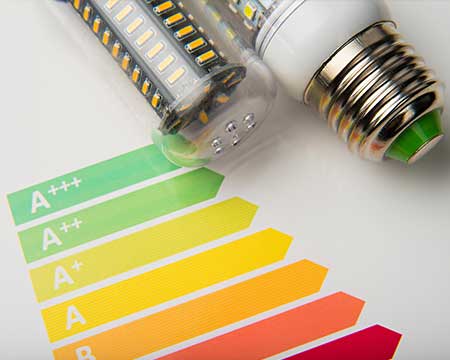
Energy Efficiency: Focus on Up-scaling

It is globally acknowledged that improving energy efficiency is often the most economic and best way to improve energy security and reduce greenhouse gas emissions. Energy efficiency improvements since 2000 have resulted in reduction in global energy consumption by 12%, which is equivalent to adding another European Union to the global energy consumption. It has helped many countries in avoiding additional spending on energy imports. For example, without efficiency gains in Japan, during 2016 the oil and gas imports would have been higher by 20% and 23% respectively (IEA, 2017). Energy efficiency is seen to be one of the key elements that can contribute towards reducing the energy requirements and the associated environmental implications. The benefits of energy efficiency have been seen in all sectors viz. industry, residential, buildings and transport. Industrial energy efficiency improvements have played a major role with many energy intensive sectors like cement manufacturing and aluminium smelting showing major gains in emerging economies. Building energy efficiency has also improved but much more is possible. IEA estimates that by 2022, nearly 90% of the indoor lighting worldwide would be based on LEDs and CFLs.
In developing economies, the rising energy demand coupled with combination of increased economic activity and the need to improve living standards warrants focused initiatives at an accelerated pace to transform energy production and consumption levels. For example, India is among the fastest growing major economies in the world and the demand for energy has grown at a rapid rate during the last decade. The Government of India has already undertaken several measures to improve efficiency in the energy sector and accelerated the introduction of renewable energy in the country. India’s Nationally Determined Contributions also emphasize on energy efficiency as a key measure to manage energy demand. Initiatives like Perform, Achieve and Trade (PAT) for large industrial units are helping the industry sector improve its energy efficiency. Other initiatives like development of Energy Conservation Building Codes and Standards and Labelling Program for various appliances are expected to play a major role in improving the energy efficiency in the residential and commercial sectors. India is already leading in the global LED market through Pradhan Mantri UJALA (Unnat Jyoti by Affordable LEDs for All) Yojana. After the success of this LED program in India, EESL is taking it to the other parts of the world. There is also an increased thrust by various distribution utilities on initiating Demand Side Management (DSM) programs within their licensed areas.
A recent study by TERI on energy efficiency potential in India indicates that the most relevant end-uses and sub-sectors with significant potential for energy efficiency in India include industry sub-sectors like iron & steel, cement, bricks and other industries including MSMEs; agriculture pumping; and efficient lighting & space conditioning in the residential and commercial sectors wherein changes could possibly be brought in fairly quickly. In the transport sector, the options include switch towards rail based movement and electric vehicles besides improvement in vehicle efficiencies.
Objectives
To deliberate on up-scaling energy efficiency initiatives in different end-use sectors and identify effective business models that can help expand the market for energy efficiency.
Key Questions
- Buildings consume about one-third of total annual energy consumption in the world and are seen as one of the largest contributors of GHG emissions in many countries. Developing benchmarks for energy consumption in buildings and increased use of star labelled appliances are seen as extremely important initiatives in driving energy efficiency in this segment. Given the challenges, what are the different ways that should be considered by countries for accelerating energy efficiency in this sector? Can ESCOs play a major role? What policy measures and frameworks (taxes, subsidies, standards, etc) would create a market pull to drive green buildings?
- Energy use and transport are closely related. In many countries, the transport sector is the largest commodity importer and therefore, has a significant effect on the macro economic situation of the country. There is an increasing interest globally on moving towards electric vehicles. What kinds of domestic policy environments would accelerate the switch to EVs?
- Given the low price for electricity for agricultural sector and difficulties in pushing energy efficiency in highly decentralized sectors like MSMEs, what should be done to facilitate faster uptake of Energy Efficient Technologies and Best Operating Practices? Any specific business models and Programs ?
- What initiatives are required to encourage Governments, businesses and financing institutes to invest in R&D and innovation on energy efficient products and technologies?